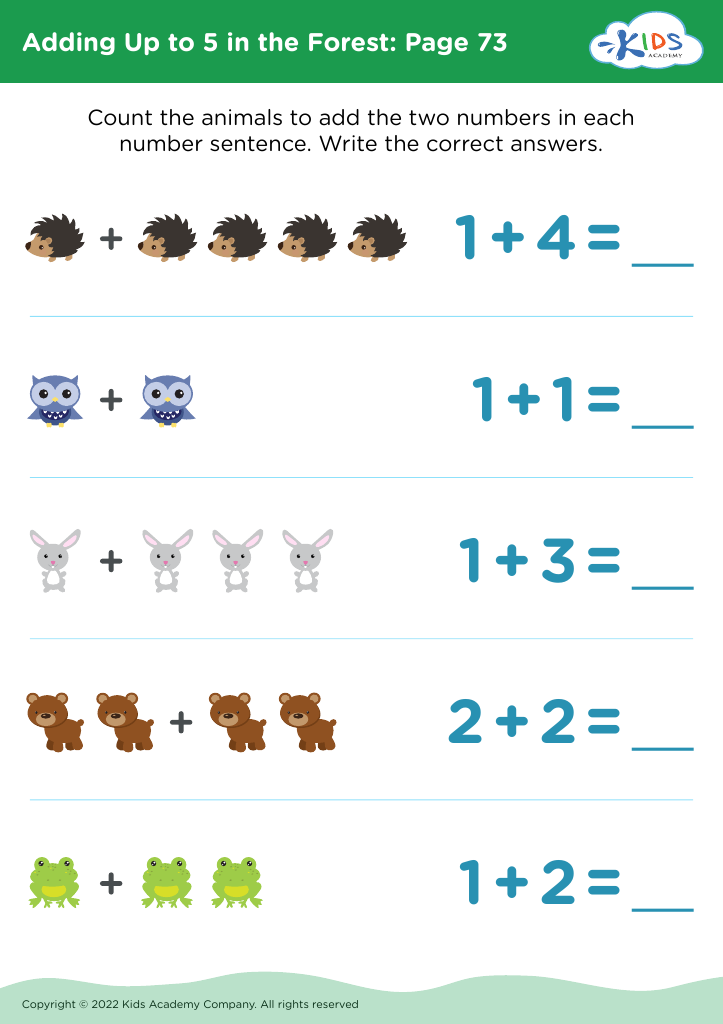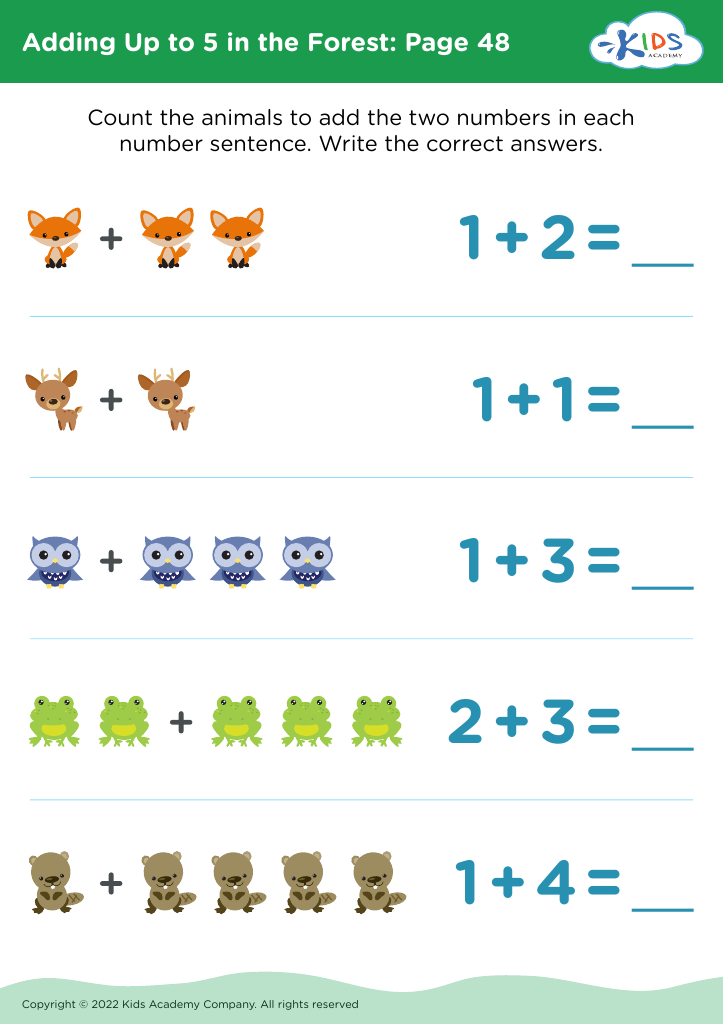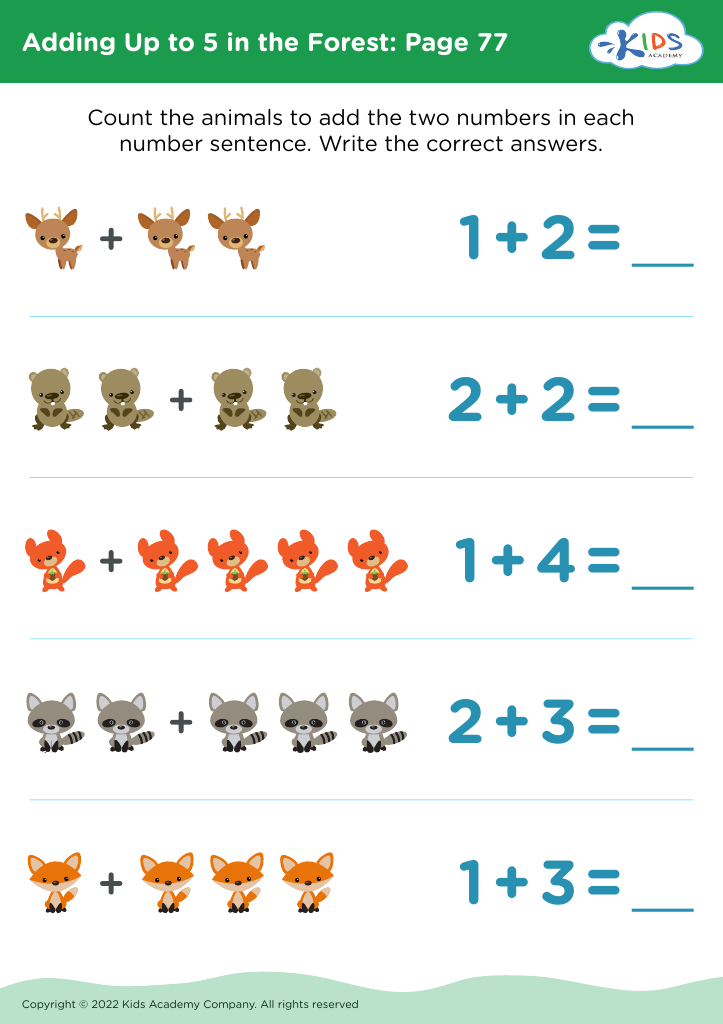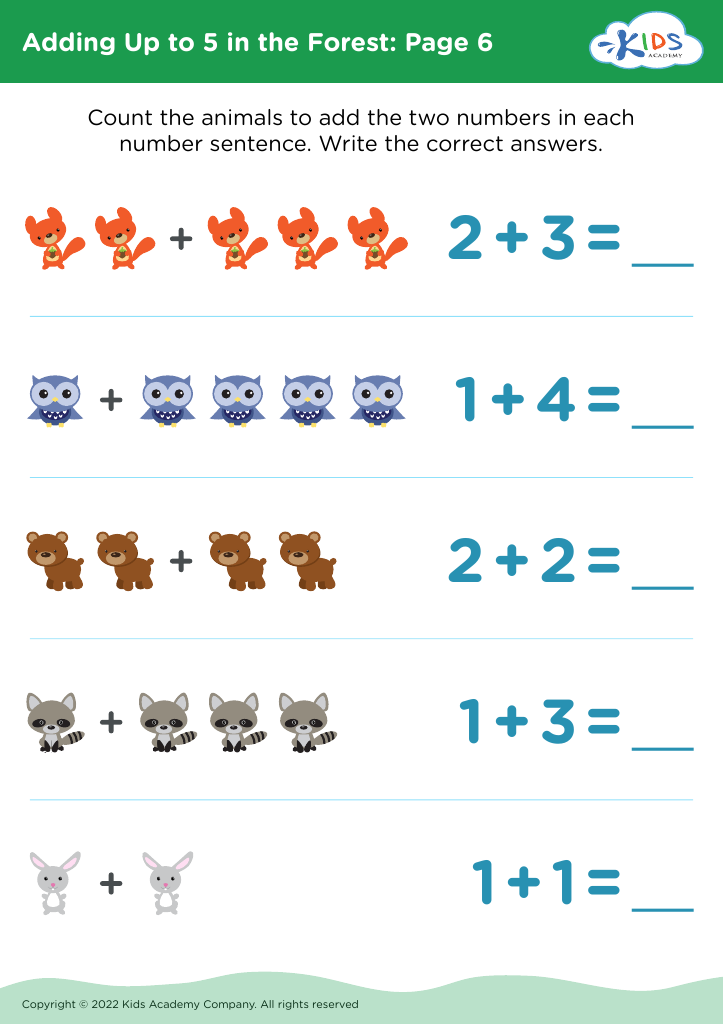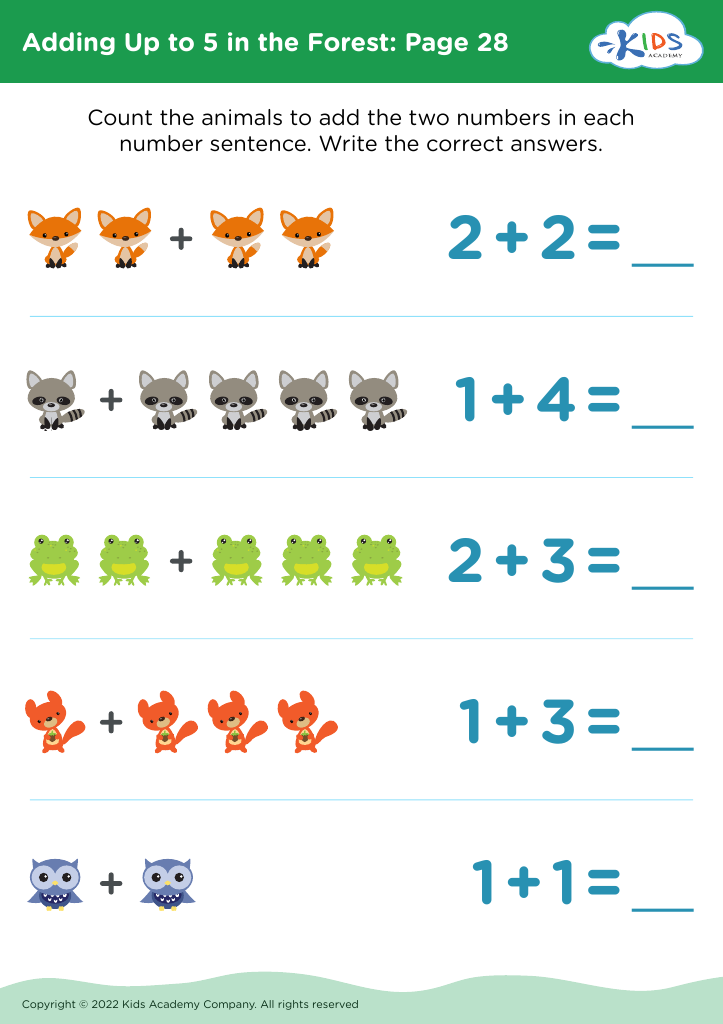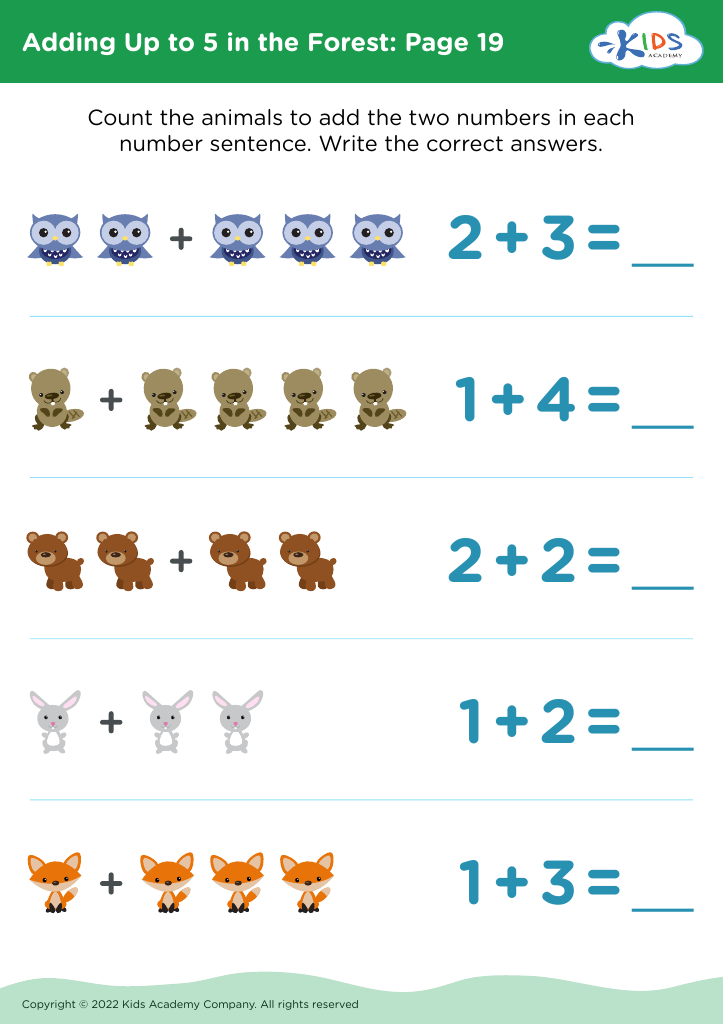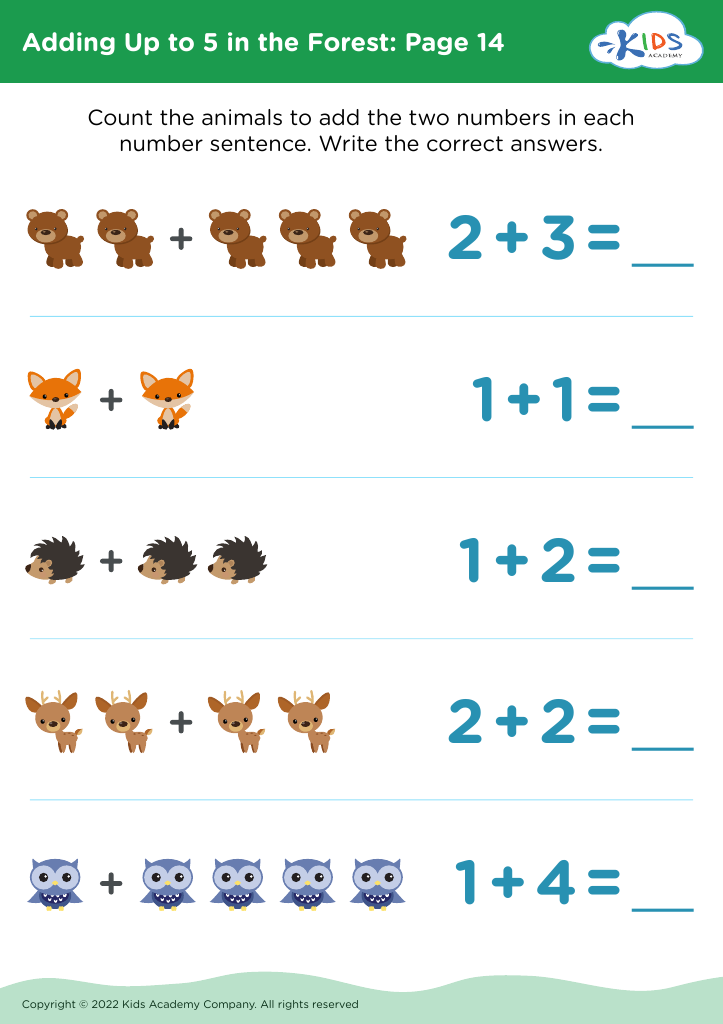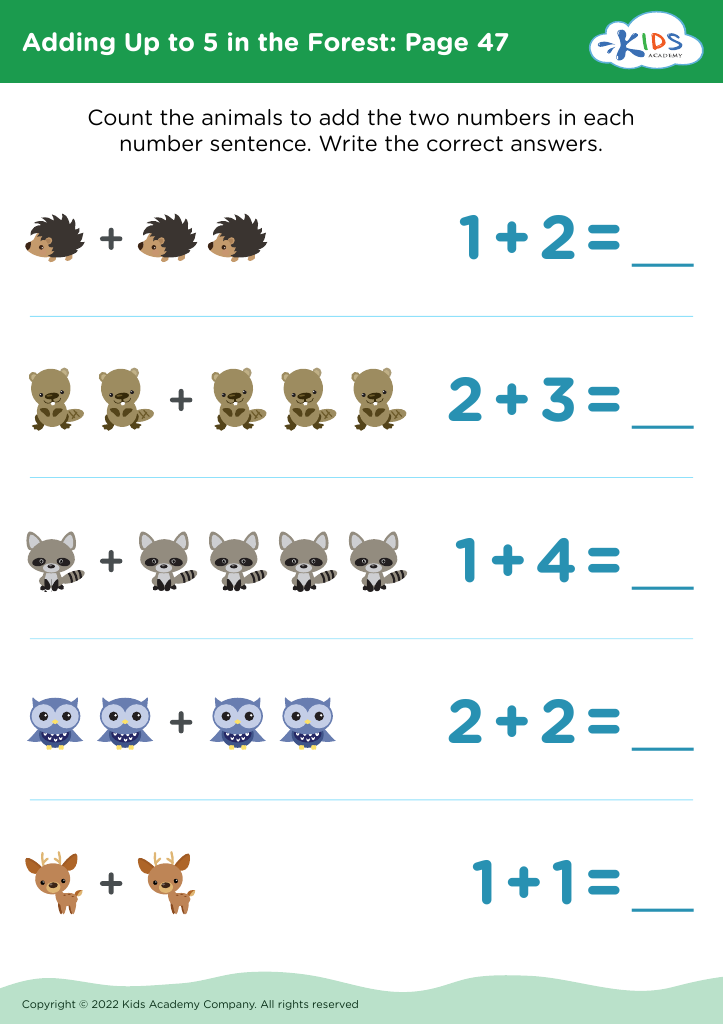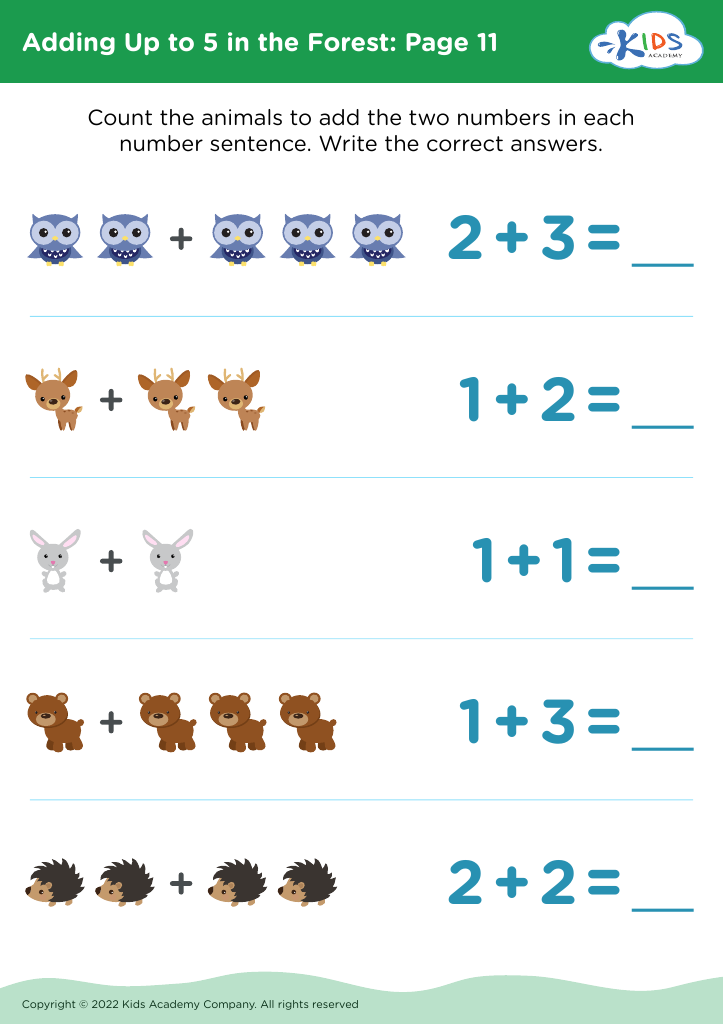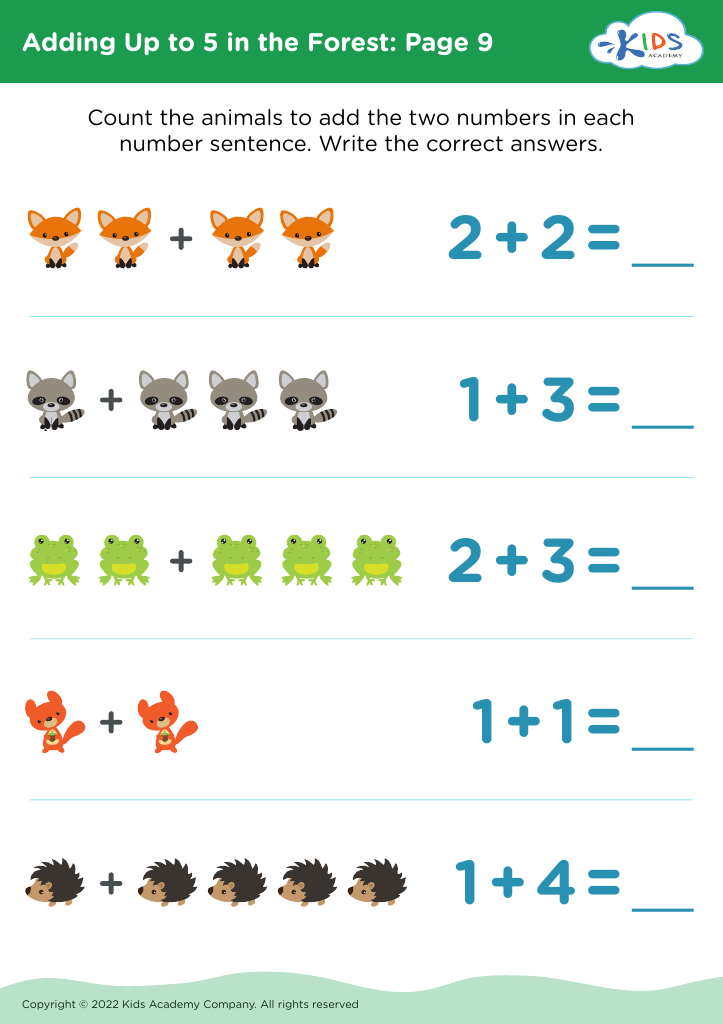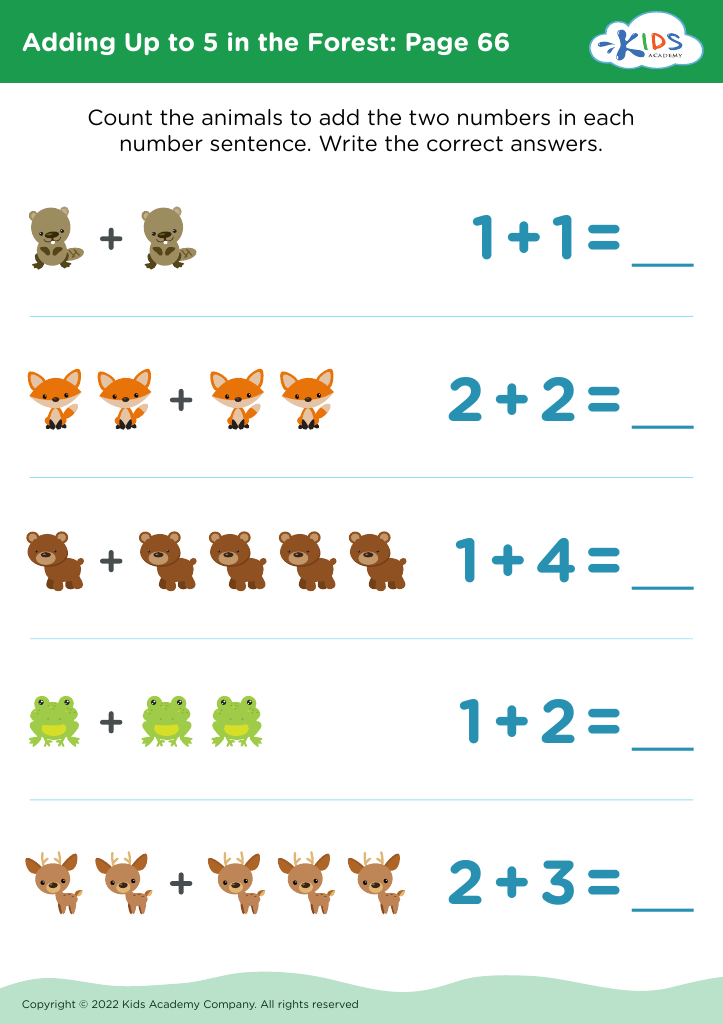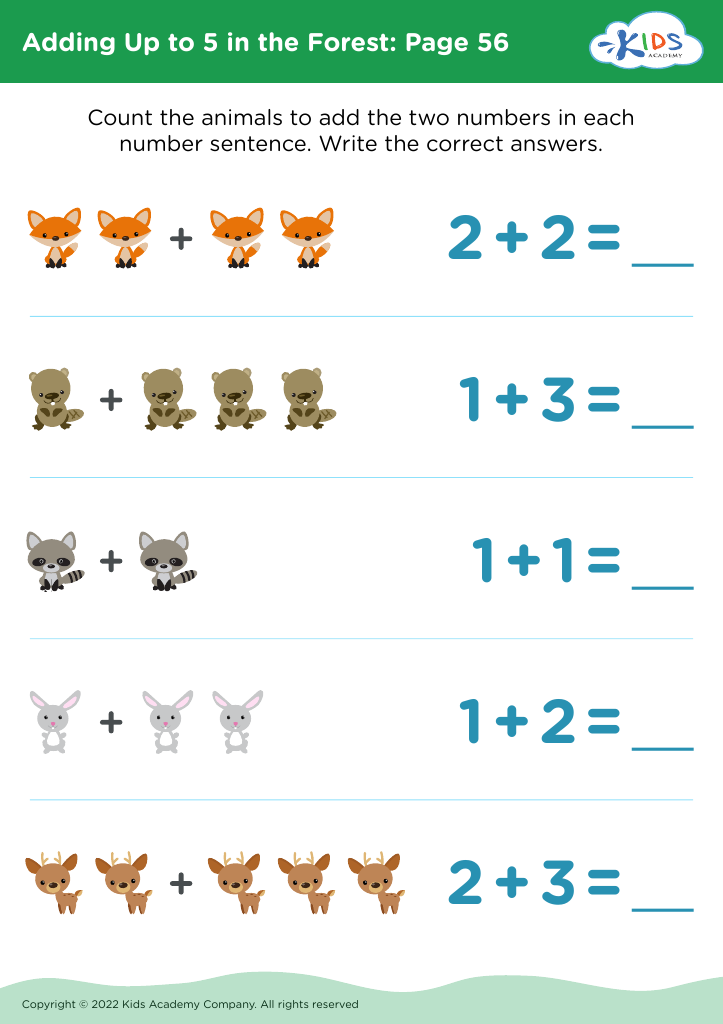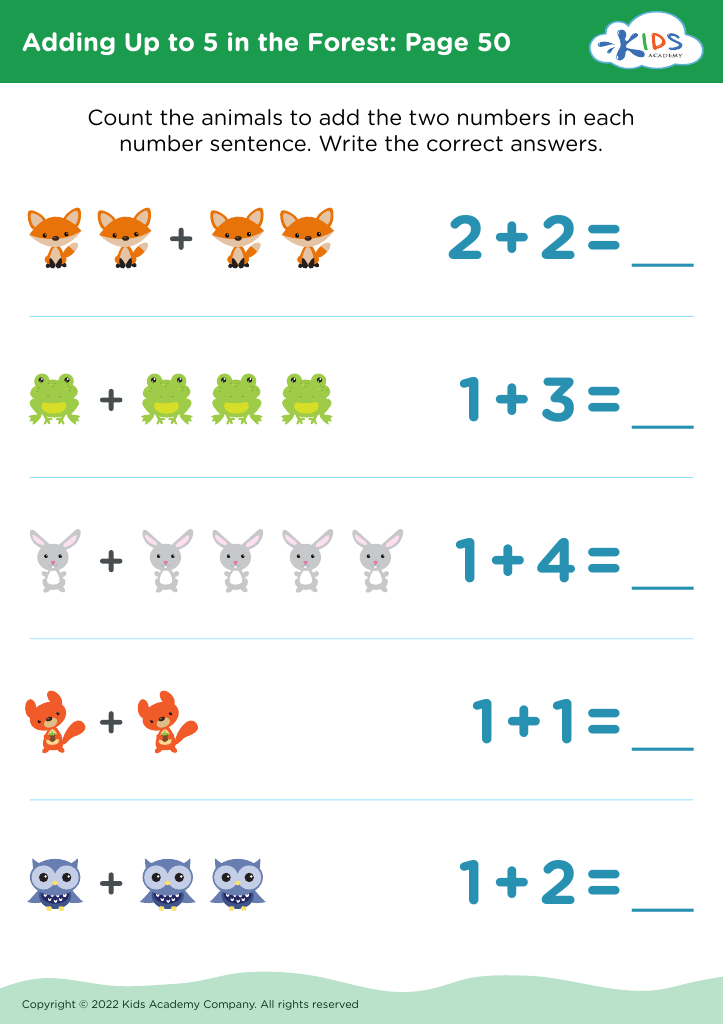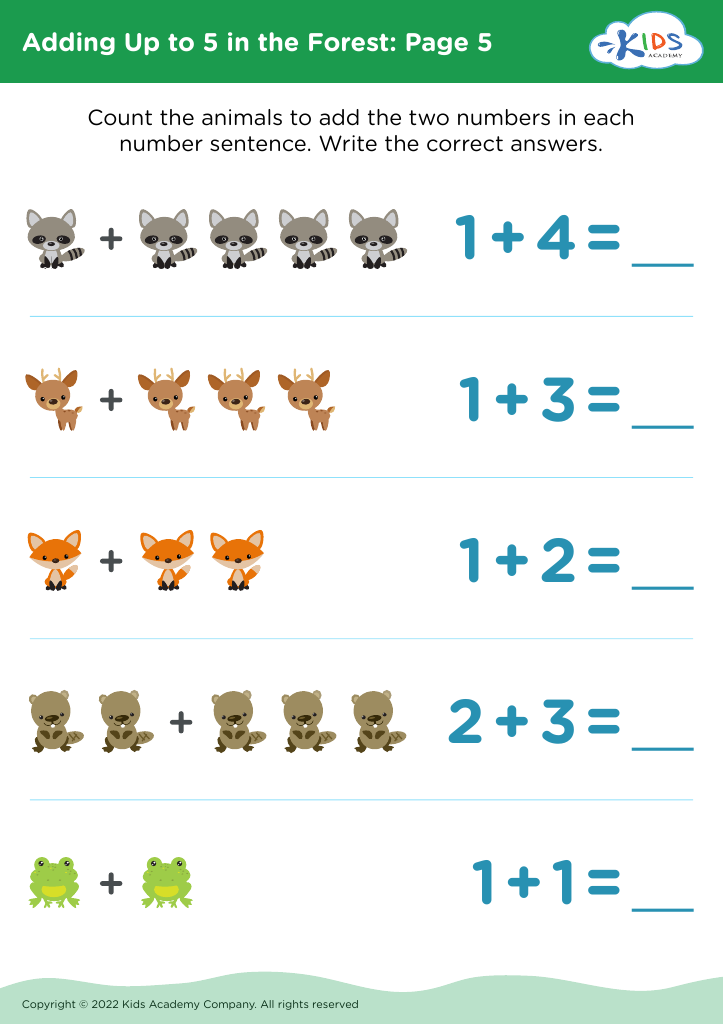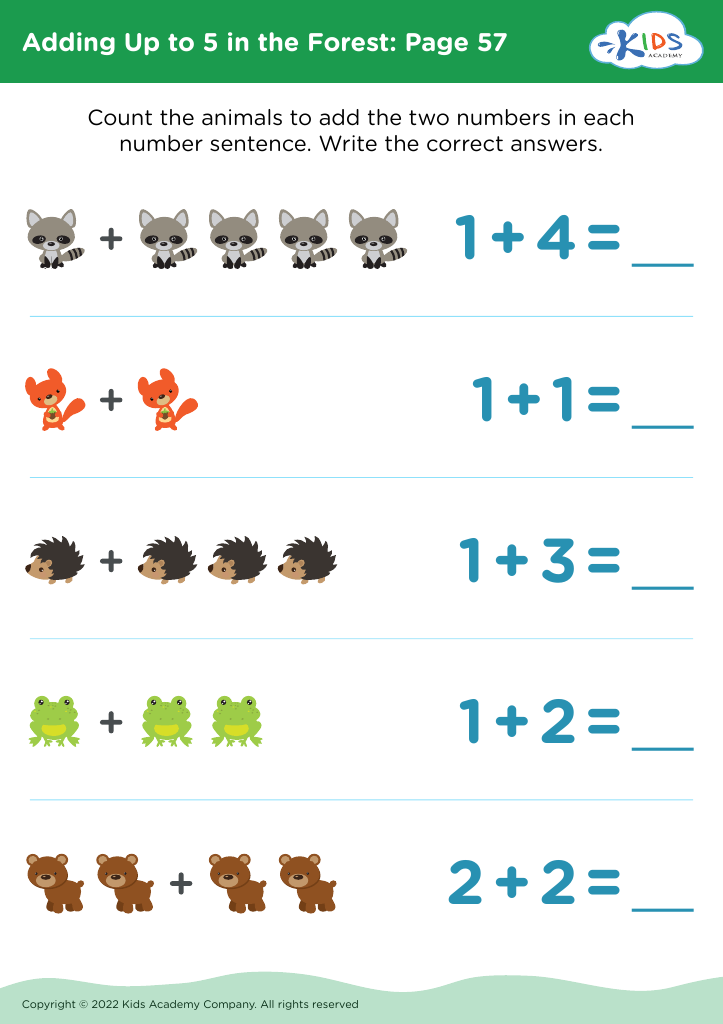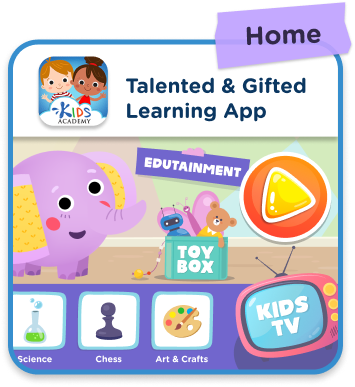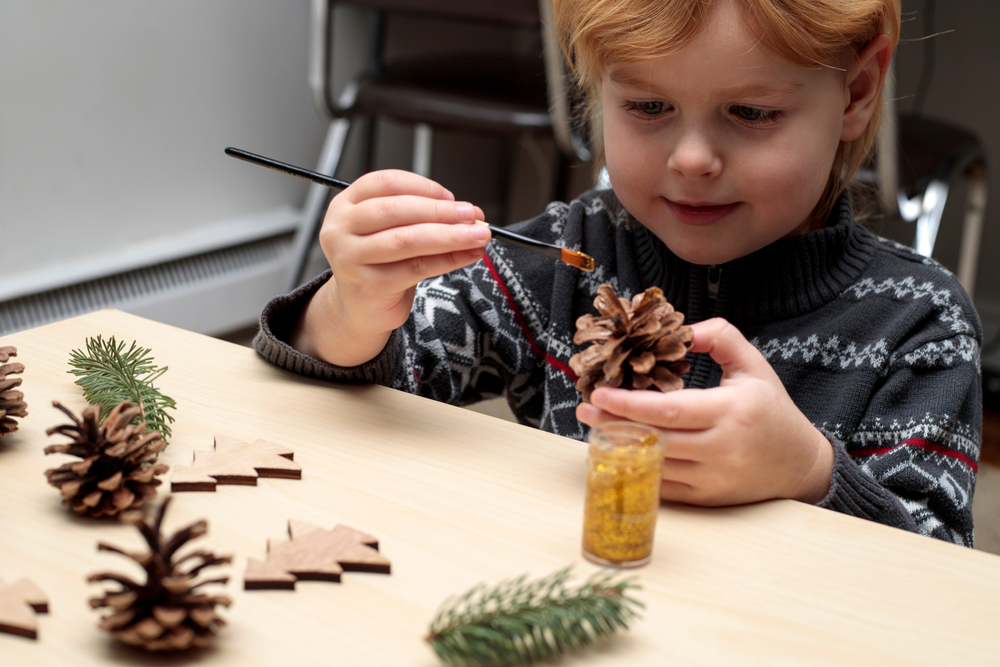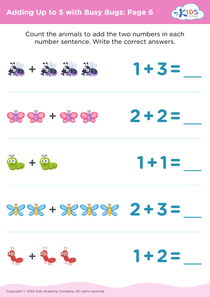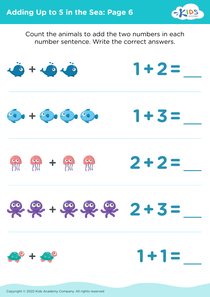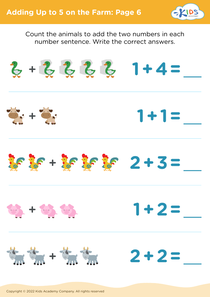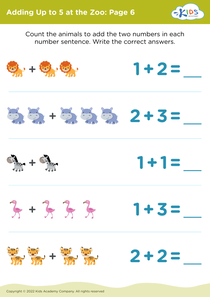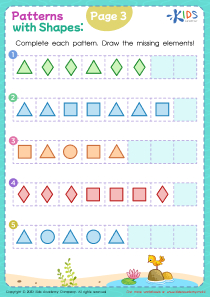Animal recognition Adding in the Forest Worksheets for Ages 5-8
15 filtered results
-
From - To
Explore our "Animal Recognition Adding in the Forest Worksheets" designed specifically for children ages 5-8! This engaging resource combines fun with learning, helping young learners enhance their addition skills while discovering various forest animals. Each worksheet features vibrant illustrations that captivate children's attention and make learning enjoyable. Your little ones will practice counting and addition through interactive exercises that reinforce their understanding of numbers while identifying different animals. Perfect for classroom activities or at-home learning, these worksheets provide an excellent way to boost mathematical confidence and foster a love for nature. Download and watch your children thrive in math and animal knowledge!
Animal recognition is a crucial skill for children, especially for those in the 5-8 age group, and incorporating the concept into outdoor settings like forests can enhance their learning experience. Firstly, animal recognition helps young learners develop observational skills. By identifying and understanding local wildlife, children become more aware of their environment, fostering curiosity and encouraging them to ask questions about animals and ecosystems.
Additionally, learning about animals adds to children’s vocabulary and comprehension skills, as they engage with terminology related to different species and their habitats. Understanding that not all animals are the same promotes critical thinking, empathy, and respect for living creatures.
Furthermore, connecting animal recognition to forest exploration can inspire a love for nature and ignite stewardship for the environment in children at an early age. It allows them to appreciate biodiversity and understand the importance of conservation.
For parents and teachers, facilitating lessons about animal recognition can form a strong educational foundation. It empowers children to navigate the world around them while cultivating their emotional intelligence and social awareness. Overall, fostering these skills in a natural setting enriches the child's learning journey and nurtures responsible and informed future citizens.

